1.2: FOIL Method and Special Products
( \newcommand{\kernel}{\mathrm{null}\,}\)
In this section, examples are given for multiplying a binomial (
Real numbers inform how and why rules work within algebraic expressions. For that reason, let’s examine how to multiply the real numbers:
You might complete the problem using a traditional approach learned in grade school. This approach is shown below.
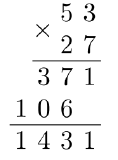
Alternatively, we can use total rectangular area to find the product
Step 1: Write both
Step 2: Each side length of the larger rectangle is broken into the sum of tens and ones.
Step 3: Find the area of each of the four smaller rectangles.
Step 4: Sum the four areas to find the total area.

By either method, the correct answer is
However, the rectangular area method informs us how binomials are correctly multiplied. We can follow a pattern of multiplication called FOIL: First Outer Inner Last.

Binomials containing algebraic expressions will behave the same way real numbers behave. The FOIL method is required when variables stand in the place of real numbers.
Multiply
Solution
Use the FOIL method:

Multiply
Solution
Use the FOIL method. Subtraction can be changed to addition,

Special Products of Binomials
The FOIL method can be reliably used to multiply all binomials. That is, you are not required to use the following special products if you wish to continue using FOIL. However, getting used to observing mathematical patterns and using patterns is a good math skill to hone.
Case 1: Same terms, but one binomial is a sum, while the other binomial is a difference.
Multiply
Solution
By the FOIL method:
Case 2: Same terms, and same operation: either both are plus, or both are minus.
Multiply
Solution
By the FOIL method:
The product is called a difference of squares.
The product is called a perfect square trinomial.
Multiply
Solution
Use the Special Product Formula:
Determine the values
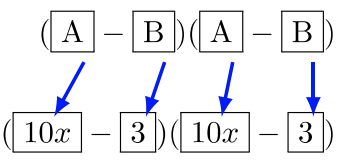
Answer
Multiply
Solution
Use the Special Product Formula:
Determine the values
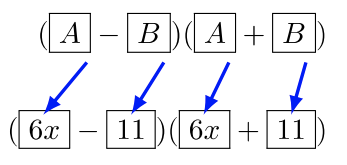
Answer:
What property of multiplication is demonstrated in the following equation?
Solution
The quantities
Multiplying Polynomials of More Than 2 Terms
Finally, let’s tackle multiplying polynomials of any number of terms, not just binomials. The FOIL method was developed using area of a rectangle. We’ll use the same method to develop a strategy for multiplying polynomials of more than
Multiply
Solution
The concept of a rectangle’s area will be our guide1.
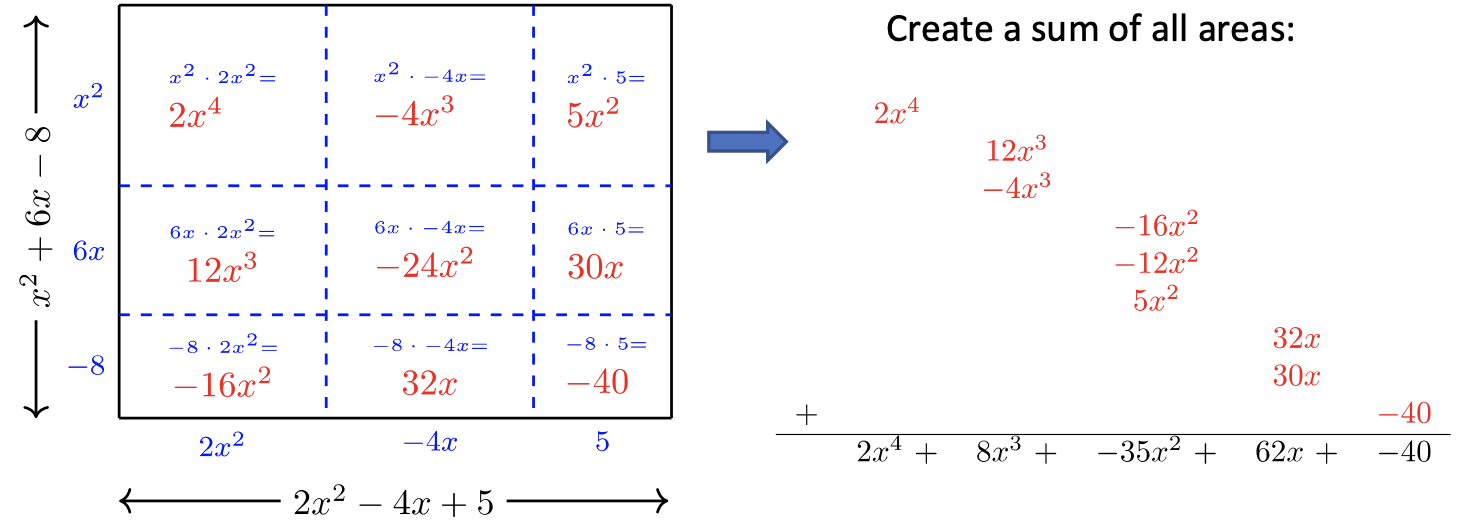
Answer:
Multiply
Solution
We have
Create a table with the terms of each polynomial representing length and width of a rectangle:
| \(-100x\) |
Answer
Try It! (Exercises)
For #1-12, multiply using the FOIL method.
For #13-14, find the polynomial that represents the area of each rectangle.
13. 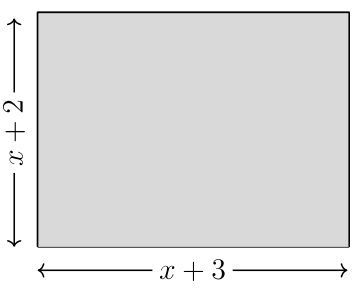
14. 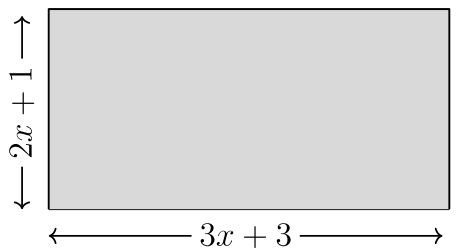
For #15-23, use an appropriate Special Products Formula to multiply.
For #24-31, multiply the polynomials.


